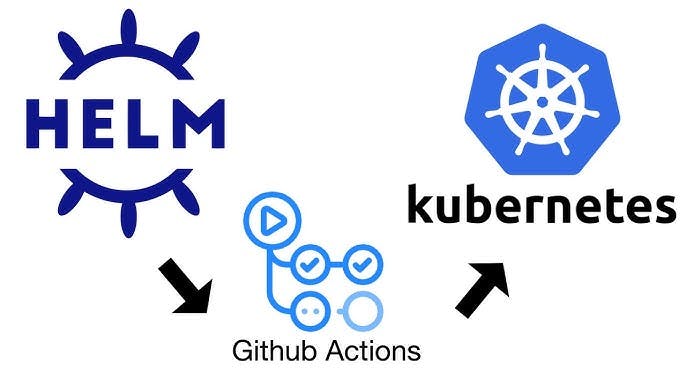Succeeding in the UPSC Civil Services Exam requires more than just hard work; it demands smart, efficient, and targeted study. ChatGPT can be a revolutionary tool in your arsenal, but only if you use it correctly. Generic questions yield generic answers. The key lies in crafting precise, powerful prompts that transform the AI into your personal mentor, evaluator, and study planner.
This guide provides a curated list of advanced prompts designed for every stage of your UPSC journey, from strategy to the final interview. Simply replace the text in [brackets] with your specific query.
I. Strategy, Planning, and Syllabus Deconstruction
Before you start learning, you need a roadmap. Use these prompts to build a solid foundation.
- Detailed Syllabus Breakdown:
Deconstruct the UPSC syllabus for[GS Paper 1/2/3/4 or Optional Paper 1/2]. Identify all the micro-topics and keywords mentioned. Furthermore, analyze the last 5 years of PYQs for this paper and highlight the high-yield, recurring themes. - Creating a Personalized Study Plan:
Act as a UPSC mentor. Create a detailed and realistic[weekly/monthly]study plan for an aspirant who is a[full-time student / working professional]. The plan must integrate[GS Subject],[Optional Subject], Current Affairs, answer writing practice, and dedicated time for revision and mock tests. - Optional Subject Analysis:
I need to choose an optional subject. My academic background is in[Your Degree, e.g., Engineering], and my interests are[Your Interests, e.g., International Relations, History]. Provide a comparative analysis of[Optional Subject A, e.g., PSIR]and[Optional Subject B, e.g., History]based on the following criteria:- Syllabus overlap with General Studies.
- Scoring trends in recent years.
- Availability of resources and coaching.
- Conceptual vs. factual nature of the subject.
- Booklist and Resource Curation:
Generate a comprehensive and prioritized booklist for[GS Paper 3: Economy]. Categorize the list into ‘Foundational Books (NCERTs)’ and ‘Advanced Books’. For each book, briefly explain its relevance to the syllabus.
II. Conceptual Clarity and Note-Making (GS & Optional)
Move beyond simple definitions. These prompts help you build deep, multi-dimensional understanding.
- Layered Explanation of Complex Topics:
Explain the concept of[e.g., Judicial Review]in three layers:- Simple Explanation: Use a real-world analogy for a beginner.
- UPSC Mains Explanation: Detail its constitutional basis, evolution through landmark Supreme Court cases (
[e.g., Kesavananda Bharati case]), its scope, limitations, and significance in Indian democracy. - Critical Analysis: Discuss the arguments for and against judicial activism vs. judicial restraint.
- Inter-Topic and Inter-Paper Linkages:
Explain the intricate link between[Topic A from GS-2, e.g., 'role of SHGs']and[Topic B from GS-1, e.g., 'women empowerment']and[Topic C from GS-3, e.g., 'inclusive growth']. Provide examples of how they influence each other. - Multi-Dimensional Analysis (PESTLE Framework):
Provide a multi-dimensional analysis of the[policy/issue, e.g., 'Agnipath Scheme']. Structure the answer under the following headings: Political implications, Economic impact, Social consequences, Technological aspects, Legal challenges, and Environmental considerations (if any). - Creating Structured Revision Notes:
Summarize the key points from the following text into concise, revision-friendly notes. Focus on extracting facts, committee names, key recommendations, and arguments for/against. Present the output in a structured, hierarchical format (headings and bullet points).[Paste your article/chapter text here]
III. Mastering Current Affairs
Integrate daily news with the static syllabus effectively.
- UPSC-Oriented News Analysis:
Take this news article about[e.g., the recent discovery by the James Webb Telescope].- Explain the core scientific concept in simple terms.
- Connect it to the UPSC syllabus, specifically
[GS Paper 3: Science & Tech]. - Suggest one potential Prelims MCQ and one Mains question based on this topic.
- Editorial Deconstruction:
Analyze this editorial on[e.g., India's demographic dividend].- Identify the author’s central thesis.
- List the key arguments and evidence used to support it.
- Identify any counter-arguments or alternative perspectives mentioned.
- Extract 5 powerful keywords or phrases that I can use in my own answers.
[Paste the editorial text here] - Government Scheme Breakdown:
Provide a comprehensive overview of the[e.g., PM-KISAN scheme]in a table format with the following columns: Nodal Ministry, Objectives, Key Features, Beneficiaries, Significance, and Challenges/Criticisms.
IV. The Art of Mains Answer Writing
This is where you’ll gain your competitive edge. Use ChatGPT as your personal writing coach.
- Generating Answer Structures:
Generate a comprehensive answer structure (Introduction, Body with subheadings, Conclusion) for the following UPSC question:[Paste the full question, e.g., 'Do you think the Constitution of India does not accept the principle of strict separation of powers rather it is based on the principle of ‘checks and balance’? Explain.']. The structure should suggest key arguments, relevant constitutional articles, and landmark judgments to be included. - Answer Evaluation and Feedback:
Act as a strict UPSC Mains evaluator. I am providing my answer to a question below. Evaluate it on a scale of 10 based on the following criteria: relevance, structure, content depth, clarity, and adherence to the word limit. Provide specific, actionable feedback on how to improve it.
Question:[Paste the question]
My Answer:[Paste your written answer] - Improving Introductions and Conclusions:
For the question:[Paste the question], write three different types of introductions:- A definition-based introduction.
- A data/report-based introduction.
- A historical/context-setting introduction.
Finally, write a futuristic and optimistic conclusion for the same question.
V. Excelling in the Essay Paper
Develop the breadth and depth required for a high-scoring essay.
- Brainstorming and Framework Generation:
I have to write a UPSC essay on the topic:[e.g., 'Girls are weighed down by restrictions, boys by demands – two equally harmful disciplines']. Help me brainstorm ideas by exploring its philosophical, social, economic, political, and psychological dimensions. Provide a logical structure for the essay, suggesting anecdotes, quotes, and examples for each section. - Finding Relevant Quotes and Anecdotes:
Provide 5 powerful quotes related to the theme of[e.g., 'Justice', 'Technology and Humanity', 'Education']that can be used in an essay. For each quote, mention the author and briefly explain its context and relevance.
VI. Conquering Prelims (MCQs)
Use ChatGPT to sharpen your MCQ-solving skills and plug knowledge gaps.
- Generating Prelims-Style MCQs:
Based on the content of[NCERT, Class 11, Chapter on Fundamental Rights], generate 10 high-quality, UPSC Prelims-style MCQs. Include a mix of question types: multiple-statement, match-the-following, and assertion-reasoning. After the questions, provide a separate answer key with detailed explanations for each option. - Differentiating Between Confusing Concepts:
Explain the subtle differences between[Concept A, e.g., 'National Emergency (Art. 352)']and[Concept B, e.g., 'President's Rule (Art. 356)']. Present the comparison in a table, highlighting key differences based on grounds for proclamation, impact on fundamental rights, and parliamentary approval process.
VII. Acing the Personality Test (Interview)
Simulate the interview environment and prepare for any question.
- DAF-Based Question Bank:
Act as a UPSC interview board chairperson. Based on my Detailed Application Form (DAF) details below, generate 20 potential questions, covering my background, opinions, and situational judgment.- Home State:
[e.g., Kerala] - Graduation:
[e.g., B.Tech in Mechanical Engineering] - Optional Subject:
[e.g., Sociology] - Hobbies:
[e.g., Playing Chess, Blogging]
- Home State:
- Mock Interview Simulation:
Let’s conduct a mock interview drill. You are the interviewer. Ask me a tough question on the controversial issue of[e.g., 'Uniform Civil Code']. After I provide my answer, challenge my position with a strong counter-argument or a follow-up question.
My Answer:[Type your answer here]
Also, Check These Prompts:
A Final Word of Advice: ChatGPT is a powerful co-pilot, not an autopilot. Always verify critical facts, figures, and legal provisions from standard sources. Use the AI to brainstorm, structure, and refine, but the core learning and critical thinking must be your own. Happy learning!








